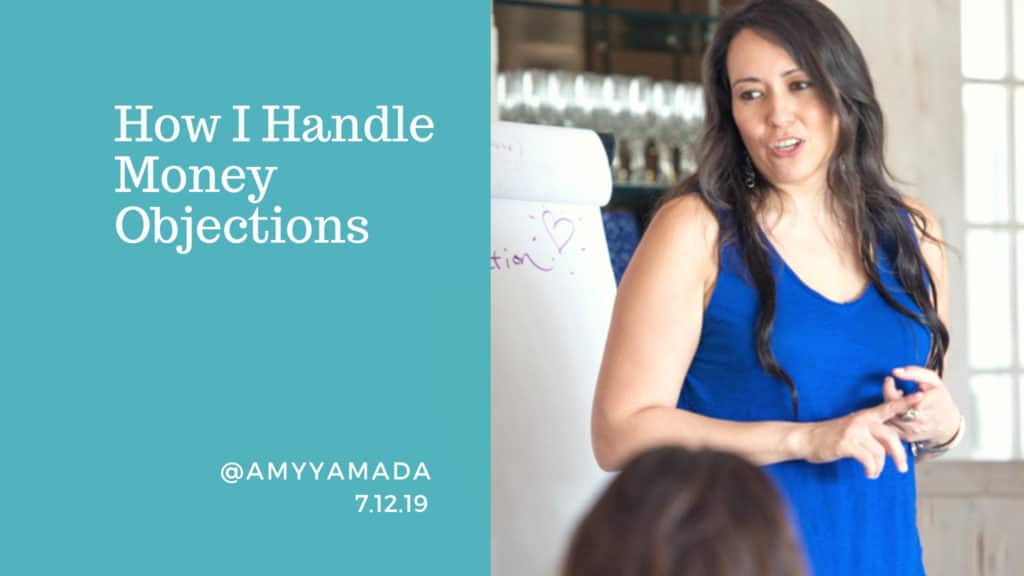
Whether you are newer in business or further along, I encourage you to open yourself up to the possibility that you can always take your enrollment conversations to the next level. The problem I often seen is that entrepreneurs will talk to their ideal clients, will have a great conversation with them and as soon as it comes to making the offer and talking about money than all sorts of things can come up.
I know in my own journey I used to really struggle with this piece because whenever a money objection came up, I felt like I was being pushy or trying to convince the potential client if I tried to handle it. Nothing feels good about pushing someone to do something. What I’ve seen is that there are 2 main money objections, either sticker shock or can’t afford it. You know it’s sticker shock when you get to the point of making the offer and sharing the price, and the response from the potential client is “wow, that’s expensive.” Or “oh my gosh, I have sticker shock.”
A can’t afford it objection sounds more like “I totally see the value, and I can’t afford it,” or “I want to work with you, I just can’t afford it.”
Handing a Sticker Shock Objection
The most important thing to look at is how are you leading the enrollment conversation? What are you saying to establish the value of what it is that you do Ideally, in an enrollment conversation, you’re getting to know a little bit about the prospect and where she is right now in relation to what it is that you offer.
Ask some questions to really get an idea of what her vision is. From today’s vantage point, what would she like to create moving forward? What is her biggest pain point? Do a deep dive. What I want to do is uncover what they really want and what their biggest challenges are. Then I use the power of storytelling. I love using storytelling because stories connect.
You will have a story within your life experience that is relatable to where they are now. Leverage that to create a deeper connection.
All of these tools allow you to establish the value, which is missing if someone is responding in sticker shock.
Handling an “I Can’t Afford It” Objection
The crucial first step is to ensure you are enrolled in your own offerings including the price point. Your price point should feel stretchy AND attainable. This means your price is outside of your comfort zone and you are confident in it and the value you’re providing at that price. Now, when you’ve adequately established the value throughout the entire conversation, ideally the prospect is actually expecting it to be a high investment level.
However, the prospect still says they cannot afford it – what do you do?
I believe in leading with compassion. Take a pause and then say “You know what, I totally understand.” Then I’ll think about a time in my journey when I wanted to do something, whether it was business or personal, whether it was going on a trip or investing in something, and I too did not know how I was going to pay for it.
I don’t want it to sound scripted so I tend to use different stories from my journey to help the potential client cross the line. Then I would connect back by asking “so when I share my story what part resonates with you?”
Now, sometimes the person really is in a dire spot, and so I would invite them to study my work online for free on my social media channels or by joining my email list. However, if the potential client is not in a dire spot and simply needs help crossing the line, I start to open her mind to how she can make it work. I let them know about the payment plan and we talk through ideas of how they can make it work. And it’s not with any kind of pushy energy. It’s with what I call “best friend energy.”
Talk to them like you’d talk to a friend who came to you wanting to figure out how to make something work financially. See where this approach takes you!
Want more training like this?
I originally trained on this topic in the Empowered Entrepreneurs Facebook Group.
This is a FREE group for coaches and service-based entrepreneurs and I’m giving exclusive live Tuesday at 9am PT in the group.
